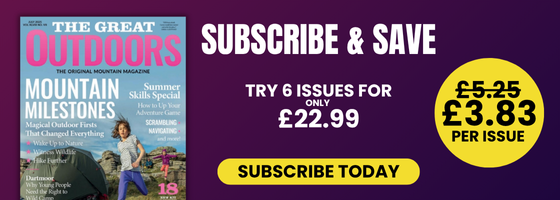Roger Smith reviews an informative book on the lynx with gorgeous photos – but wishes the rewilding movement were more coordinated.
This review was first published in the June 2018 issue of The Great Outdoors.
The first thing to be said about The Lynx and Us is that it is a very beautiful book. It is lavishly produced with many stunning full-page photographs, most of them by Laurent Geslin, who like the author has spent many years studying the lynx. The photographs are so striking in fact that they tend to rather overpower the text, particularly as this is printed in a curious greyscale which can be hard to read in artificial light.
This is a pity as the book is well worth reading. Scotland: the Big Picture are unashamed apologists for the reintroduction of high-end predators such as the lynx and the wolf – their strapline is ‘amplifying the case for a wilder Scotland’ – but despite this the book presents a very full and fair picture of the lynx and its relationship to other animals, and of course to humans.
Unlike the wolf, the lynx is a solitary animal that hunts by stealth rather than running down its prey as wolves do. Lynx operate mainly between dusk and dawn and very rarely confront other animals, or humans. The book clearly describes the results of lynx reintroduction projects in other parts of Europe, including the rather farcical attempt in Italy when two lynx were released, both of them males!
Concern has been expressed over lynx predation on livestock, especially lambs, with disturbing figures coming from Norway. It turns out however that while lynx certainly do take lambs, the Norwegian figures are artificially inflated because the Norwegian government pay farmers compensation for any lost animals, and very rarely check to see if lynx actually were the cause.
One thing that would greatly concern me is the effect lynx reintroduction in Scotland might have on our seriously endangered native wildcat population. The two species could be sharing the same habitat and even prey and as lynx are bigger they could terminally undermine the wildcats. I would much rather see greater efforts put into stabilising our wildcats before lynx were reintroduced.
One thing I found curious was that the book did not (as far as I can see) mention the Lynx Trust, a body set up specifically to argue the case for reintroduction. This I think shows a weakness in the rewilding movement – there are too many disparate and often single-issue groups working independently and not together.
I must admit I am ambivalent about lynx reintroduction, but I found this book a valuable source of information – and the photographs are lovely.
Roger Smith
The Lynx and Us by David Hetherington is published by Scotland: The Big Picture (£25.00).
Book review: The Lynx and Us by David Hetherington








